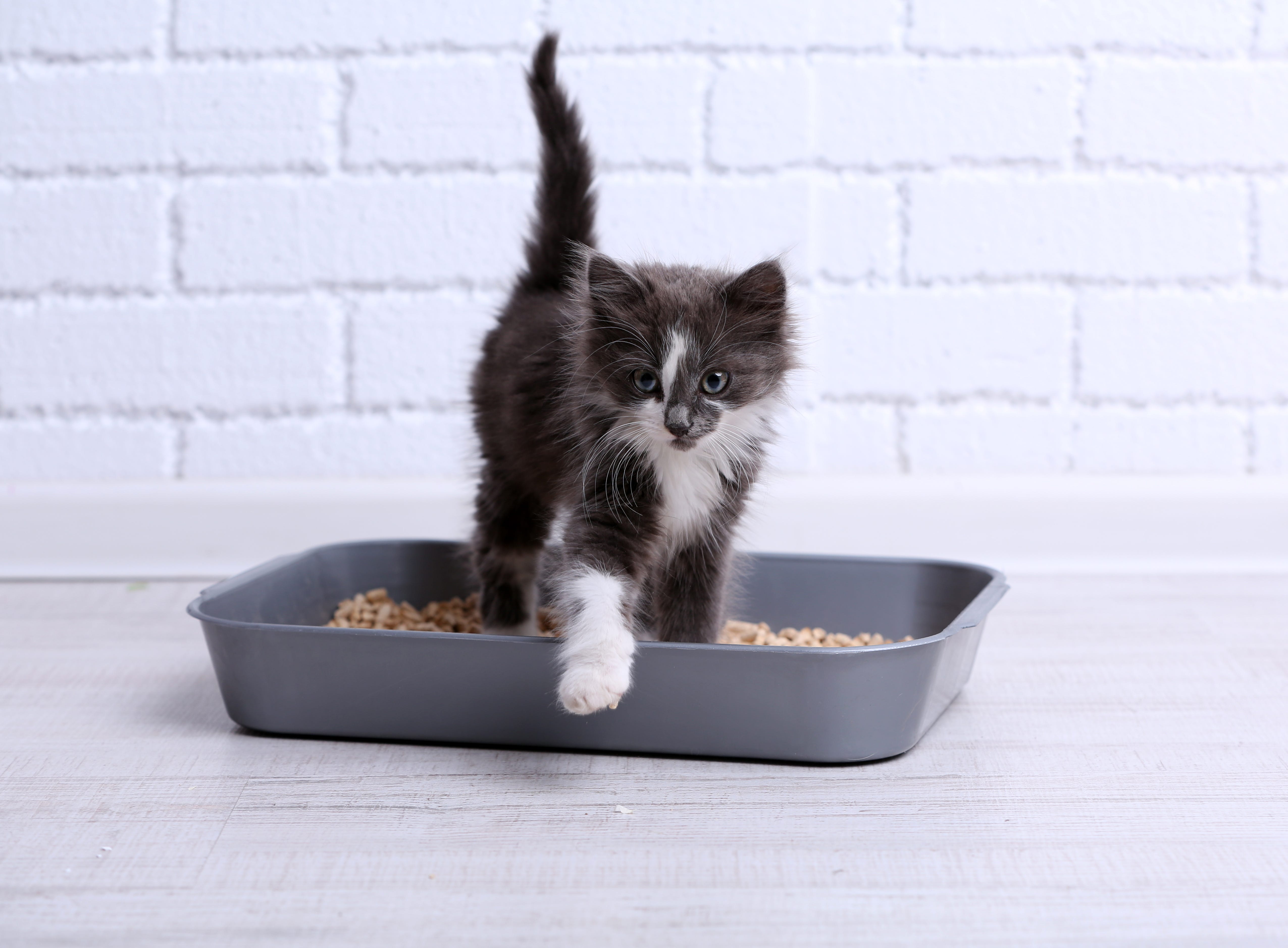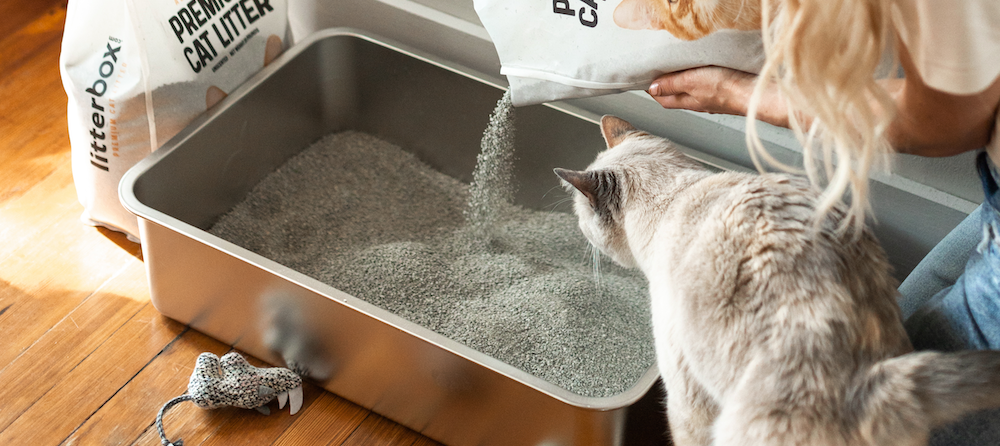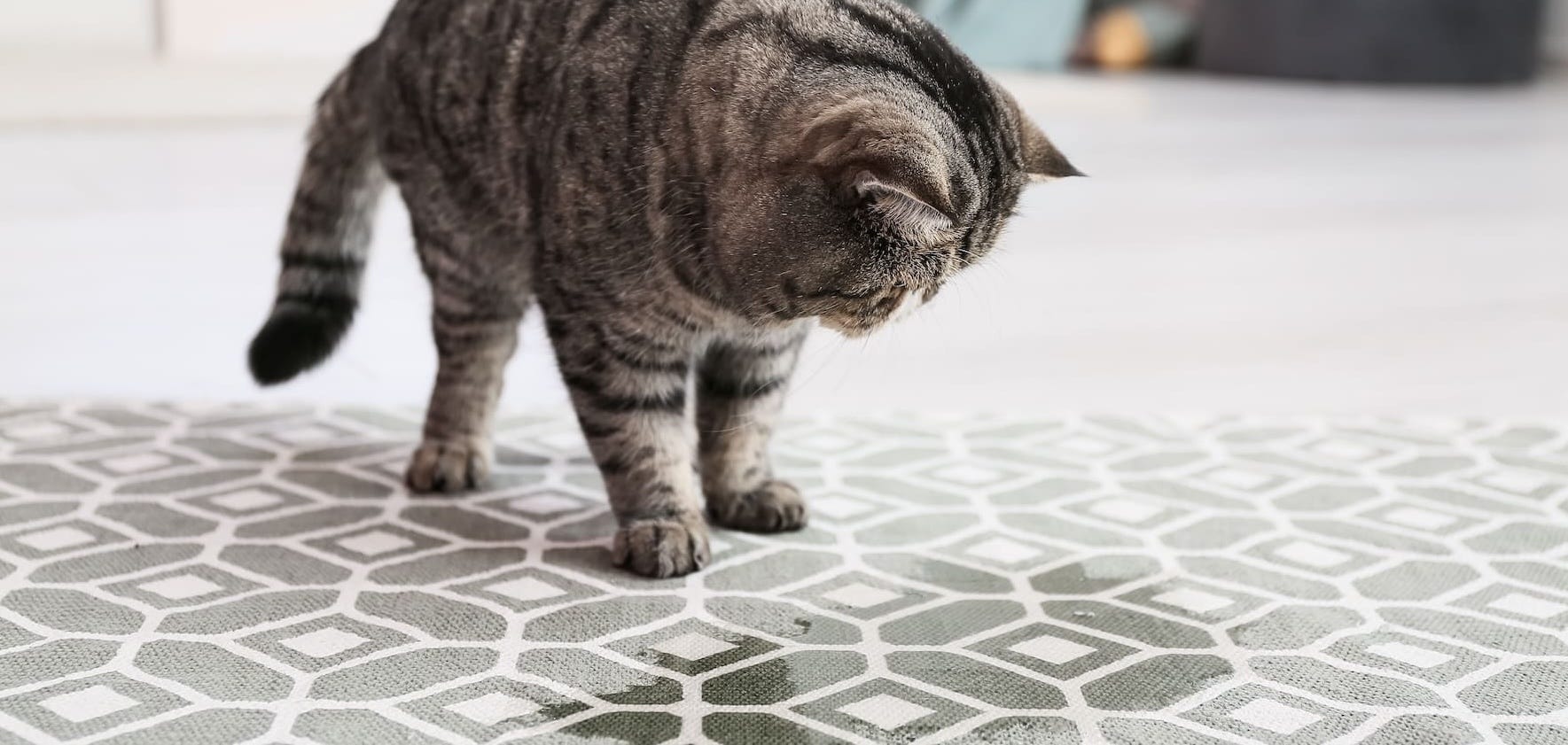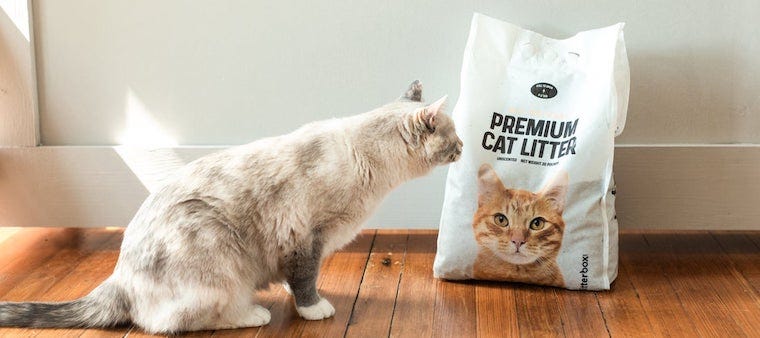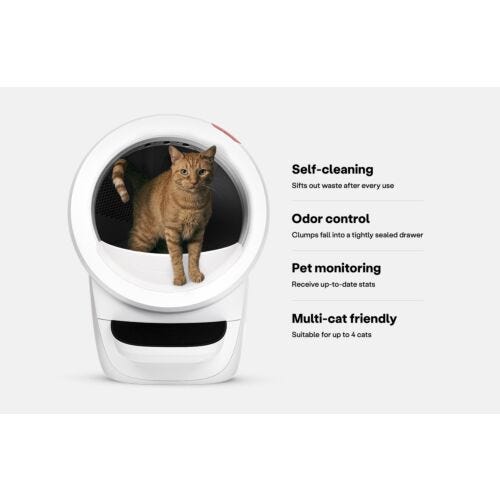Scented litter and unscented cat litter: What's the difference?
Unscented cat litter is made without additional scent agents. Sometimes, unscented cat litter is called odorless litter; however, unscented cat litter will retain the smell of whatever it is made out of (clay, wood, corn, wheat, etc.). If you get an unscented cat litter with odor-absorbing additives like baking soda or carbon, it may smell like those things.
Scented cat litter contains additives that help cover or absorb those telltale litter box smells (ammonia, feces, mold). Odorants include fragrances, perfumes, deodorizers, or other natural or artificial scent agents. Sometimes an ingredient like carbon or baking soda is added in addition to the fragrance to help absorb litter box odors. Fragrances in scented litters are wide-ranging, such as lavender, outdoors, pine, fresh, spring breeze, and even Hawaiian.
So, which cat litter should you use for your cat? Do cats prefer scented or unscented cat litter?
What does the research say?
Mixed results

The short answer is that cats show a slight preference for unscented cat litter vs scented. Jacqueline Neilson, DVM, has conducted a number of studies on cats and litter box behavior; she presented the results of one such study at the 2011 Veterinary Behavior Conference.
One relevant study looked at litter use for 35 neutered cats over a four-day period. At the end of the study, the total amount of urine and feces was measured to determine whether cats preferred scented or unscented cat litter. The results? The scented litter was used 134 times, while the unscented cat litter was used 143 times.
For individual cats within the study, 16 preferred unscented cat litter, 12 preferred scented, and 7 showed no preference. This led Dr. Neilson to conclude there isn't a statistically significant preference for one kind of litter.
Scented litter and house-soiling

Contrasting evidence is found in Dr. Debra Horwitz's 1997 study published in Applied Animal Behavior Science. Dr. Horwitz compared two populations of cats: 100 with a history of house-soiling and 44 with no history of persistent house-soiling. Out of the 100 cats with elimination problems, 68% had scented litter in their homes.
While correlation doesn't necessarily mean causation, this finding suggests a potential association between scented litter and house-soiling behavior in cats.
While the study provides valuable information, it's only one piece of the puzzle in understanding house-soiling behavior in cats. Other factors, such as environmental stressors, litter box cleanliness, medical issues, and individual cat preferences, could also influence elimination habits.
Odor-controlling additives

A 2010 study by Dr. Neilson on the efficacy of litter odor control additives, published in the Journal of Veterinary Behavior, might lead us to a slightly different conclusion. In this study, Dr. Neilson examined whether cats show a preference for litter odor control additives, specifically focusing on carbon versus baking soda.
The study concluded that cats prefer carbon as an odor-controlling additive compared to baking soda. This result suggests that the question of whether cats prefer scented or unscented cat litter is too simplistic; perhaps there are more nuanced factors at work.
In conclusion, your cat might prefer a litter box where odors are controlled using carbon filters rather than DIY odor-neutralizing products using bicarbonate or soda.
General fragrance preferences
Some studies focus on which smells cats show a general preference for. Dr. Neilson's work shows up again on scent preferences in domestic cats, in two studies from 2007 and 2008. Dr. Neilson demonstrated that cats tend to prefer either cedar, fish, and bleach aromas or unscented litter and that they tend to avoid citrus and floral scents. Unscented litter and bleach scents split out from the other scents as being the most “liked” by the study's cats.
While we might be tempted to draw conclusions about scented cat litter based on these studies, it's important to note that this research wasn't carried out in association with litter box use, but fragrance preferences in general. That said, if you choose to use a scented litter, Dr. Neilson's research might suggest avoiding litters with citrus and floral fragrances.
Conclusion: scented vs. unscented cat litter
Considering the slight inclination towards unscented cat litter in one study and the preference for bleach scent or unscented cat litter in the second study, we can conclude that unscented cat litter and frequent litter box cleaning might be the winning combo.
The determining factor might be what kind of scent that is. And if the litter has a scent, it should be one the cat prefers—and your cat might have a different set of preferences than your neighbor's cat.
We all want to encourage consistent litter box use and avoid problem behavior; litter choice is just one part of that calculus. We know (more certainly) that the following conditions must be in place before we blame the litter: Cats prefer clean litter boxes. They want a litter box of adequate size. They want a sufficient number of litter boxes available (usually one more litter box than the number of cats in the household).
If your cat has no litter box problems, then there's no reason to change your cat litter (which can upset your cat if not switched gradually). If your cat does have litter box problems, after a visit to the vet to rule out medical causes, you may want to try out a different type of litter. Already using unscented cat litter? Perhaps one with an earthy, natural scent will make the difference.
The best unscented cat litter

So now that we have data leaning towards unscented cat litter being preferable to the scented version, which one is truly the best unscented cat litter? The key to selecting the best cat litter is choosing the one that your cat prefers.
When looking at the different types of cat litter, cats show a clear preference for silica and clay-clumping litter rather than wood pellets. While wood chips, sawdust, or wood pellets provide a natural forest scent, this type of litter is poor at trapping odors which may influence your cat's preferences.
On the other hand, according to a study by Virginie Villeneyve-Beugnet and Frederic Beugnet, cats demonstrate a significant preference for clay cat litter compared to silica cat litter.
Many cats favor clay-clumping litter due to its strong clumping action, which simplifies cleaning out dirty litter. Additionally, clay-clumping litter offers effective odor control by trapping and encapsulating urine, preventing unpleasant smells.
Choose what your cat prefers
While the consensus is that unscented, clumping cat litter is the most recommended, the reality is that cats are very particular creatures whose preferences cannot be ignored—or they will literally do their business wherever they want. Choose a cat litter that your cat will use, and as long as it is working and no medical issues have arisen, there is no need to fix what is not broken. If you’re trying out new cat litter, gradually transition from the old litter to the next for about a week to reduce the likelihood of rejection or other unwanted consequences. Scented or unscented, be sure to scoop regularly and keep the litter box clean (or use a self-cleaning litter box) to ensure that your cat is happy and healthy.
